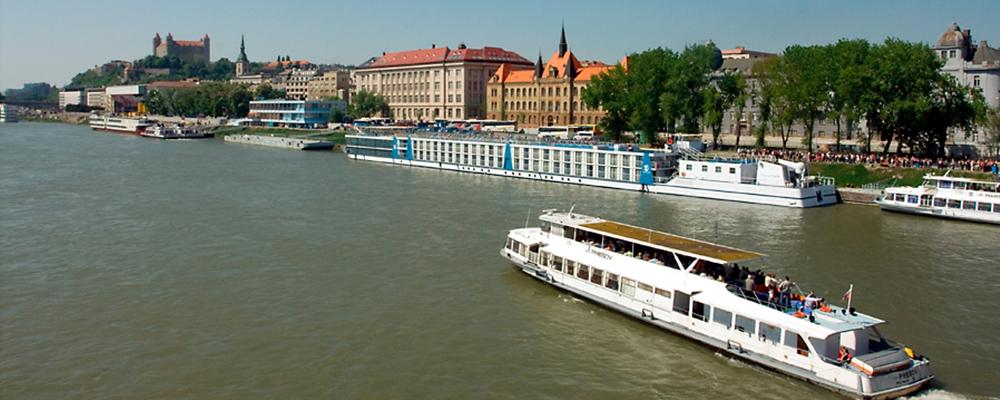
Slovakia
( 1 user review )Slovakia (Slovak: Slovensko), formally and still officially the Slovak Republic, is a landlocked country in Central Europe. It is surrounded by Austria to the west, Czech Republic to the northwest, Hungary to the south, Poland to the north and Ukraine to the east.
With numerous medieval Gothic and Baroque towns, nine national parks, plenty of caves, well preserved folk architecture and traditions, a lively and cosmopolitan capital city and probably the highest number of castles and chateaus per capita in the whole world, there's something for every traveler to enjoy in Slovakia.
Regions
-
Western Slovakia - Bratislava, Danube, lower river valleys
-
Central Slovakia - Banská Bystrica, Medieval mining, national parks
-
Eastern Slovakia - Košice, Prešov, mountains, castles
Cities
-
Bratislava - capital and the largest city of Slovakia with a beautifully restored historical centre full of Gothic, Baroque and Renaissance churches, houses and palaces, cobblestone streets, fountains, pleasant cafes and lively and cosmopolitan atmosphere.
-
Banská Bystrica - was one of the most important mining towns of Hungarian part of Austro-Hungarian Empire; beautiful restored square, many churches, castles and museums and memorial of the Slovak National Uprising
-
Žilina - Fourth biggest city with a well preserved historical city centre influenced by German architecture and unique museum of the tinker´s culture located at the Budatín castle.
-
Košice - metropolis of the east, second biggest city of the country with the easternmost situated Gothic Cathedral in the World, the oldest European coat of arms, a great historical city centre with the Cathedral Complex, numerous churches, palaces and interesting museums.
-
Levoca - magnificent medieval pearl of the Spis region surrounded by town walls with a unique renaissance town hall, burger´s houses, numerous churches and St. James Cathedral where the biggest gothic wooden altar of the world is situated
-
Levice - enjoyable castle which is now a museum of the Tekov region
-
Nitra - one of the oldest slovak towns with the castle and well preserved historical centre consisting many baroque palaces and burger´s houses
-
Poprad - gateway to the Tatras National Park
-
Prešov - the best example of renaissance architecture in Slovakia, numerous churches and nearby lying Solivar which is one of the most interesting salt mine museum in Europe
-
Rajecké Teplice - very peaceful spa town surrounded by magnificent Mala Fatra National Park
-
Topoľčany
-
Trenčín - one of the most beautiful Slovak towns with a castle lying above the city overlooking the historical centre and the river Váh
-
Trnava - the oldest Slovak town with the highest number of churches (12) and well preserved baroque architecture
-
Tvrdošín - centre of the Orava region, gateway to Orava's magnificent natural areas
Other destinations
-
Slovenský Raj - Slovakian Paradise National Park
-
Vysoké Tatry - High Tatras
-
Vlkolínec - UNESCO heritage list village
-
Spissky Hrad - one of the biggest castles in Europe, UNESCO listed
-
Nizke Tatry - Low Tatras National Park
Understand
Slovakia has a temperate climate with sunny summers and cold, cloudy, humid and snowy winters.
Much of the central and northern part of Slovakia is rugged and mountainous. Gerlachovský štít at 2,655 m in the High Tatras is the highest point. The Tatra Mountains in the north, shared with Poland, are interspersed with many scenic lakes and valleys. The lowlands are in the south with the lowest point of the Bodrog River being 94 m above sea level.
Slovakia is also a country of massive medieval castles built on the rocks, beautiful detailed ones located on plains (there is about 180 castles and ruins) as well as country of caves. Only a small number of over 3000 caves (12) is open for public forever. Mostly traditional karst caves, ice caves, aragonite cave etc. In 1918 the Slovaks joined the closely related Czechs to form Czechoslovakia. Following the chaos of World War II, Czechoslovakia became a communist country within Soviet-ruled Eastern Block. Soviet influence collapsed in 1989 and Czechoslovakia once again became free.
For many years overshadowed by their north-western Czech neighbors, political representations of Czech and Slovak decided to strike out on their own. The Slovaks and the Czechs agreed to separate peacefully on 1 January 1993 and Slovakia became a country in its own right.
Historic, political, and geographic factors have caused Slovakia to experience more difficulty in developing a modern market economy than some of its Central European neighbors. Finally, however, Slovakia joined the European Union and the NATO in 2004, and finally the Euro on January 1st 2009.
Ethnicities
There are some similarities between the Czech and Slovak cultures. However, although the Slovaks may talk and eat like the Czechs, they are not the same. One of the most striking differences is that while Czechs are largely atheists, Slovaks are largely Catholics. This they share with the Poles.
As a Hungarian territory for approximately thousand years, there is a Hungarian-speaking minority of 9.7%, mostly in southern Slovakia. Historic German populations were mostly uprooted and expelled after WWII.
In the eastern part of the country, there are many Romas/Gypsies and some Rusnacs/Rusins and Ukrainians. There are also some Czechs, Poles and still some Germans living in Slovakia.
Get in
Slovakia is a EU member and has joined the Schengen agreement, which means that you can enter on a European Union Schengen visa and there are no longer any ID/passport controls on the EU borders. Australian, Canadian, New Zealand, Mexican, Venezuelan and US citizens are all permitted to stay for up to 90 days without a visa.
South African citizens require a visa for entry into Slovakia, unless they have indefinite leave to remain as a resident in another EU country.
If you need a visa, always apply at an embassy beforehand. There are zero chances you will get a visa at a Slovak border, no matter how you enter or what your nationality is.
By train
The easiest way to get to Bratislava by train from west is via Vienna, in Austria. The trip takes 50 - 70 minutes depending on whether the train is an express or a local train (either via Kittsee or Marchegg). For the north and east of Slovakia, international trains leave from Prague in the Czech Republic to Žilina with some continuing to Košice.
Trains also travel to Slovakia from Poland, Hungary and the Ukraine. Crossing to and from Ukraine is a lengthy process due to bogie changing (different gauge in Ukraine) and security measures. Direct international trains may be expensive: the best option is to buy a ticket to a station just on the other side of the border, and buy another one for onward travel there. You'll avoid the surcharge that way.
By bus
Among many others, there are regular services from Vienna, Prague and Budapest to Bratislava; and from Uzhhorod, Ukraine to the eastern Slovak town of Michalovce.
From Budapest the travel is 4 hours, the bus stop for 5 minutes at Györ and in a small restaurant in the road.
By plane
Bratislava has its own airport. Sky Europe was the main airlines but to illiquidity has suspended all flights for the time being. RyanAir operates to Stansted, Hahn and some other cities.
Full service carriers providing service to Bratislava BTS are Czech Airlines and Lufthansa . Czech Airlines (CSA) provides several flights a day to/from its Prague hub. Czech Airlines connects its Praha hub also with Slovak airports in Kosice, Sliac and Zilina. One can also fly between Kosice and Vienna (OS) and between Kosice and Bratislava (NE). Similarly Lufthansa (LH) provides several flights a day to/from its Munich hub. There is also nonstop connection to Moscow and several other cities to the east.
The other alternative is Vienna airport Schwechat, which is just about 35 kms from Bratislava. It provides a more convenient way of arriving to Slovakia by the major airlines, but can be more expensive. Buses leave for Bratislava hourly, optionally you can take the airport shuttle.
Poprad - Tatry Airport is also connected with Bratislava, Bologna and Basel thanks to scheduled routes operated by Danube Wings.
You can also fly to Krakow if you want to go to the Tatra Mountains. Buses from Krakow run to several Slovak towns around the Tatra mountains and Orava.
Get around
CP offers an exceptionally useful website with integrated timetables for all trains and buses in Slovakia, including all intra-city and inter-city transports.
Trains
Train is by far the best option to travel across Slovakia, provided you don't have a private vehicle. Rail network is extensive, the only exception is central southern Slovakia, where buses are more efficient. Trains are fairly priced, reliable and clean. Opt for an InterCity service if you want Western-style comfort; IC trains link Bratislava, Žilina, The High Tatras and Košice. These can save you from the crowds: ordinary trains do get crowded, usually on Fridays and Sundays. Watch out for pickpockets at major stations and steer clear of money scams. Also, sporadic robberies occur to sleeping passengers travelling the overnight longliners.
Hitchhiking
Hitchhiking in Slovakia is best done by asking around at gas stations. It used to be that most people only speak Slovak (and possibly understand other Slavic languages) so it was difficult for foreigners who don't speak Slavic languages. However, nowadays most of the young people speak English and almost as many speak German.
Keep in mind that trains and buses in Slovakia are cheap for Westerners, and (apart from extremely rural areas) it might take a while for someone to pick you up. You can find some offers if you travel from Slovakia and into Slovakia as well on specialized web pages. The biggest hitchhikers page in Slovakia is stopar.sk . There you can find offers in English, German, French, Polish, Czech and Hungarian language and it is free.
By car
If one intends to drive on the motorways it is required to pay a road toll. This is done by buying a sticker (vignette) which is valid for a week (4,90 €) or longer. The sticker is fastened in the upper right corner on the car's windshield. Getting caught driving on the motorway without a valid vignette means that one has to pay a fine.
Talk
The main languages spoken are Slovak and Czech. Czech and Slovaks are very proud of their languages, and thus, even in Prague and Bratislava you will not find many signs written in English (outside of the main tourist areas). Some older people are unable to converse in English, so it's good idea to know some Slovak, and Welcome To Slovakia offers some simple phrases. However, most young people speak at least some English, as it has been taught in most schools since 1990. Czech and Slovak are rather similar, yet distinctive languages (at first, one might think they are dialects of each other).
Slovak is written using the same Roman characters that English uses, so Western travellers won't have any trouble reading signs and maps.
As Czechoslovakia was an Austro-Hungarian territory for centuries, there is a significant Hungarian-speaking minority of 9.7%. Most of the Hungarians live in southern regions of the country and some of them speak no Slovak. Other Slovaks however normally do not speak or understand the Hungarian language.
While you can make do with English and German in Bratislava, in smaller towns and villages your only chance is trying to approach younger people that speak some English. Older residents may know some German. People born between 1935 and 1980 will have learned Russian in school, though few Slovaks will appreciate being spoken to in Russian. Due to the significant tourism growth in the North and the East of Slovakia, English is becoming more widely used and you may try Polish. Other Slavic languages, especially Russian, Serbian, Croatian, and Slovene may also work. In the east Rusyn, a Ukrainian dialect close to Polish is spoken. It is also intelligible with Russian to some extent.
If you speak the international language Esperanto, you can take advantage of the network of Esperanto delegates scattered across Slovakia.
See
Buy
The official currency of Slovakia is the Euro (€). Until January 1, 2009, the official currency was the koruna ("crown", sk) which can still be found and accepted by the central bank until 2017 at a rate of 30.126sk to €1.
Automatic teller machines (ATM, "bankomat" in Slovak, pl. "bankomaty") are widely available in Slovakia except in smaller villages, and obtaining money there should not present a problem. In most of small villages you can gain money at local postal offices (cashback). Credit cards and debit cards such as Visa, Mastercard, Visa Electron, Cirrus Maestro are widely accepted both in shops and restaurants in bigger cities.
Eat
'Bryndzové halušky' is Slovak national meal made with potato dumplings and special kind of unpasteurized fermented sheep cheese called 'bryndza'. You will get pieces of fried meaty bacon on top of Bryndzové halušky. Apart from being very tasty and delicious, the bryndza is also extremely healthy. Some scientists suppose it can even prevent cancer and treat allergies. Other typical dishes include the sauerkraut soup (kapustnica, typically eaten on Christmas), plum dumplings, chicken or goose stew with dumplings (paprikas) and Segedin goulash.
Some kinds of bread contains caraway. You may or may not like it!
When you want to prepare food by yourself, you may find it interesting buying in villages:
-
pork and chicken are the norm
-
fruits tend to be seasonal
-
vegetables or salads, seasonal
-
bread (in late hours)
There is a myth that fried cheese is often considered as substitute of meat. That is a long way from the truth. For more information visitSlovensko. However, a thick fried slice of cheese served with French fries and a salad is a common Slovak dish. It is served in most restaurants.
Drink
For non-alcoholic drinks try Vinea, a soft drink made from grapes, in both red and white and also non-carbonated. Kofola, a Coke-type soft drink, is also very popular among locals and is available both on tap and bottled. Slovakia is one of three countries in the world where Coca-cola is not the number one in the market.
Mineral waters are some of the best in the World and can offer positive effects, such as helping get rid of heart burn. There are many types available from shops and supermarkets, for example Budiš, Rajec, Dobrá Voda, Zlatá studňa, Mattoni etc. Others are only available directly from the many spas that naturally spring up all over the place.
For beers, there are a great variety of local brews that are similar in style to Czech beers. Try out the local Zlatý Bažant, Smädný Mních, Topvar and Šariš. Šariš is also available in a dark version that is thicker and heavier on your stomach. If the local tastes do not satisfy, "Western" beers are sold in the bigger restaurants and pubs. Note that quality of the tap beer may vary dramatically between different restaurants and pubs, depending on how well they can prepare the beer (good temperature, not too much carbon dioxide) and how they care about the equipment (clean pipes etc.).
Slovakia has also some great local wines, many similar to Germanic Riesling styles. There are also sweeter wines from the Southern border regions called Tokaj. Slovak wine might not be widely known outside the region but it is certainly worth a try. The best recent wine years in Slovakia were 1997, 2000, 2003 and 2006. The year 2006 is expected to be the best in the last 40 years backwards.
Slovakia produces good spirits. Excellent is the plum brandy (Slivovica), pear brandy (Hruškovica) or liquor Demänovka. But the most popular alcohol is Borovička, a type of gin. In some shops you may try a 25 or 50 ml shot for very little money, so as to avoid buying a big bottle of something of unknown flavour, then decide whether to buy or not to buy ;)
If you are a more adventurous type, you can try some home-made Slivovica that the locals sometimes offer to foreigners. While it is allowed to ferment alcohol at home by law, it is prohibited to distill it. All home-made liquors are distilled in certified destileries so you don't have to be afraid of any health risks (apart from getting drunk). The home-made liquors are very strong (up to 60% alcohol) and usually not very tasty. However, if Slivovica is matured for 12 or more years, it can become a pleasant digestive drink.
Do
Cultural Events
-
International Film Festival Artfilm - Yearly in June/July in Trenčianske Teplice and Trenčín.
-
International Film Festival Cinematik - Yearly in early September in Piešťany. Young and relatively small film festival. Accreditation for the whole festival is less than €7.
-
International Film Festival Bratislava - forever in December.
Music Events
Sleep
There is a wide diversity of rooms available in Slovakia. These range from AquaCity, based in Poprad, through to budget priced rooms in rental chalets.
Learn
There are many ways to find out more about Slovakia. These can range from Government web sites through to Tourist sites.
A site called Expat.eu offers help and advice online. There website was created to help new arrivals into Slovakia to find the most important information and get an assistance required for relocation and during their first days in the country.
Video to help you learn about Slovakia can be found at High Tatras TV
Work
There are many ways in which Europeans can research work opportunities in Slovakia. Most Embassy offices will advise European Citizens and for business investors there are a number of NGO services such as Welcome To Slovakia.
Stay safe
In case of an emergency, call 112, the universal emergency number. For police you can call 158, ambulance 155, and firefighters 150.
When visiting mountain areas of Slovakia, especially the High Tatra, inform hotel personnel of your trip plans, so that rescuers can be sent to find you if you don't return to the hotel. Also, when visiting High Tatras, contact local mountain rescue service of your intent, they may even provide you with a safety guidelines. Beware: the weather in High Tatras is prone to sudden changes, especially during spring and autumn.
Stay healthy
No vaccination is necessary to visit or stay in Slovakia although if you plan to visit countryside areas, tick vaccination is recommended. Also Hepatitis "A" and "B" vaccination is advisable as with all European countries.
Tap water is drinkable everywhere - according to one study, water used as tap water in the Bratislava-Vienna region is the cleanest in the world. If you prefer mineral waters, you can choose from multitude of marks, since Slovakia has probably highest numbers of natural mineral water springs per capita. Dark blue or Red label usually indicates carbonated ones ("perlivá"), a green label indicates mildly carbonated ones ("mierne perlivá") and white, pink or baby blue indicates those without carbon dioxide ("neperlivá").
Respect
Remember that Slovaks are a separate nation that have their independence since 1993 when the Czechoslovakia split into the Slovak Republic and the Czech Republic. As with all "young" nations, some people can be sensitive on nationality issues.
Like most other countries, politics and history are delicate topics, so tread lightly on those issues, especially World War II, which cost the lives of roughly 15% of Czechoslovakia's population, a rate similar in Poland, the USSR and Yugoslavia.
The 2006 film Hostel is an American work of complete fiction, and there are no documented cases of tourists being kidnapped and tortured in Slovakia. It is considered a safe travel destination for all tourists, as is much of Europe. It is advisable not to mention it in conversation with Czechs or Slovaks, unless you are sure they are smart enough not to take offence, as the film insulted a lot of Slovaks much like Sacha Baron Cohen's Borat insulted people of Kazakhstan, a lot less, but still enough to be a bad topic. If you feel that you must mention it, fun fact: the movie was actually filmed in Czech Republic - a piece of information Slovaks will surely enjoy. Similarly, the American movie Eurotrip (2004) might prove a sensitive topic, because it portrayed Slovakia, and its capital Bratislava, as an undeveloped country.
Contact
Contact & location
1 Review
Add your review
The photos displayed on this page are the property of one of the following authors:
Daniela, Marek Jochec, laci1015, melosko, Ricardo Martins, bazylek100, Cyndy Sims Parr, Elin B, Jorge Gobbi
Some photos courtesy of:
 ,
,  . The photos provided by Flickr, Panoramio are under the copyright of their owners.
. The photos provided by Flickr, Panoramio are under the copyright of their owners.
This travel guide also includes text from Wikitravel articles, all available at  View full credits
View full credits
This travel guide also includes text from Wikipedia articles, all available at  View full credits
View full credits
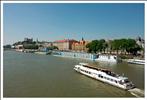
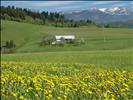

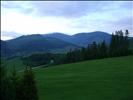
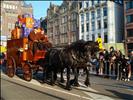




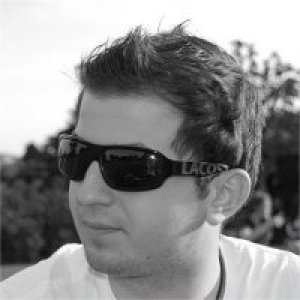





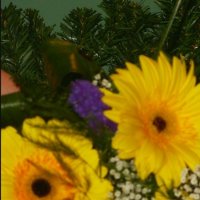




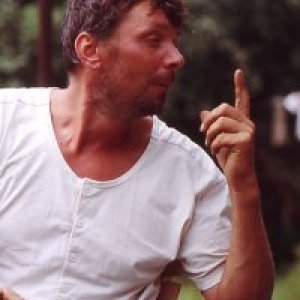
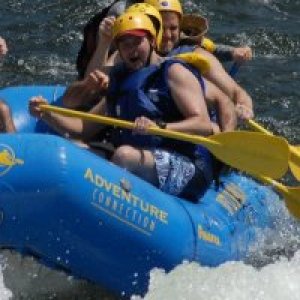






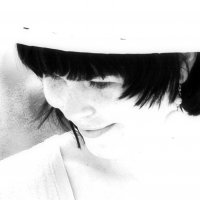
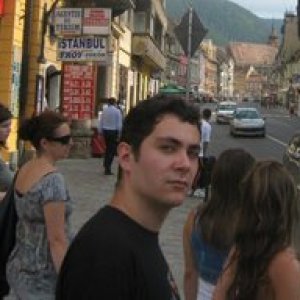

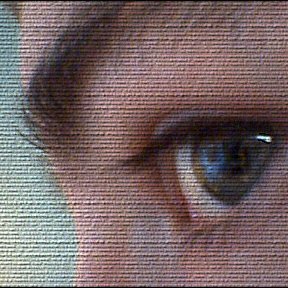

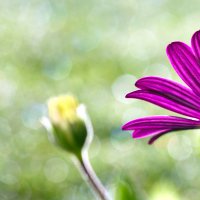
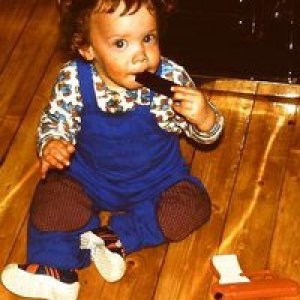

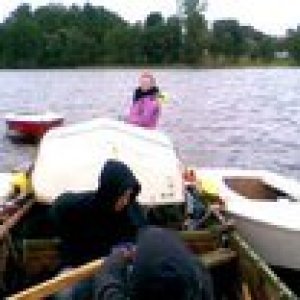

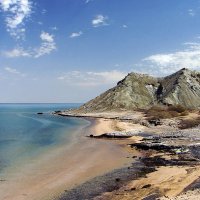
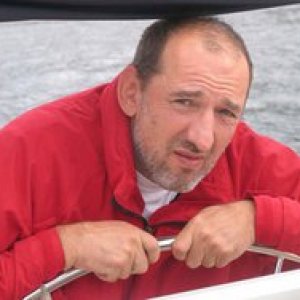
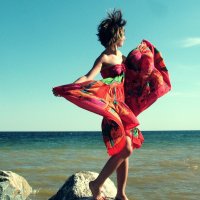
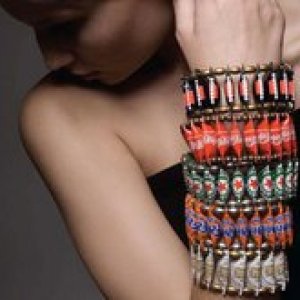
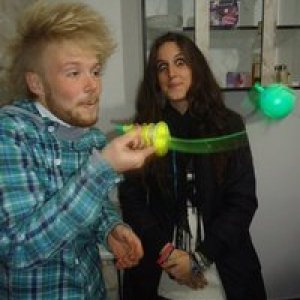


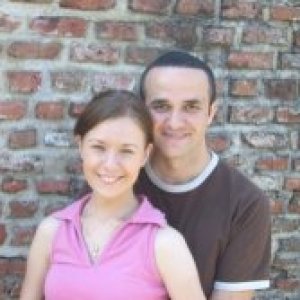

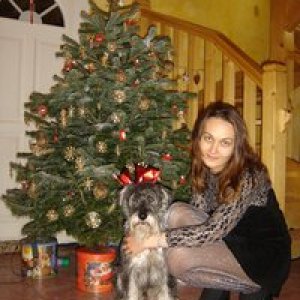
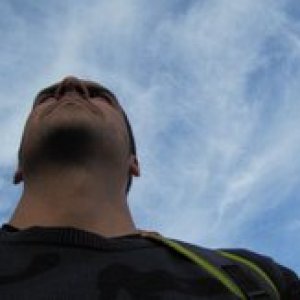
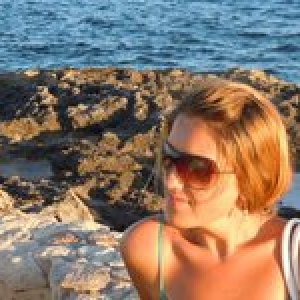

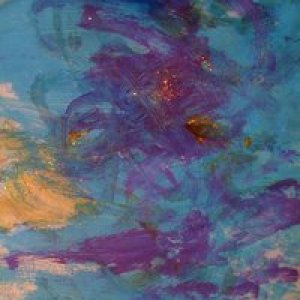








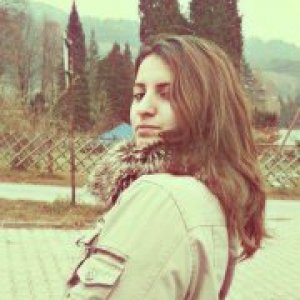
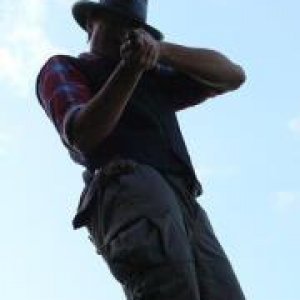

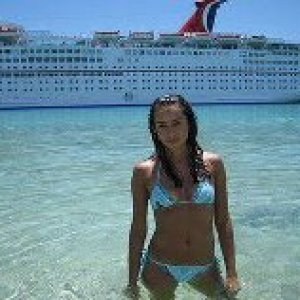

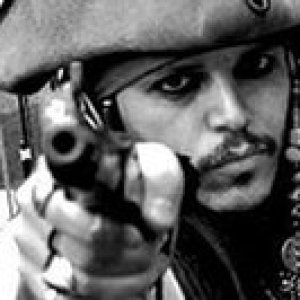
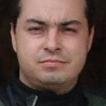
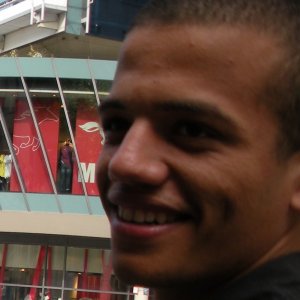


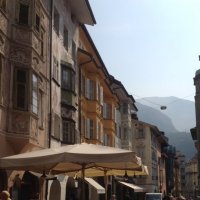
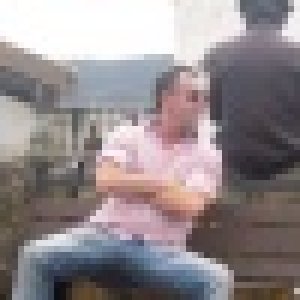



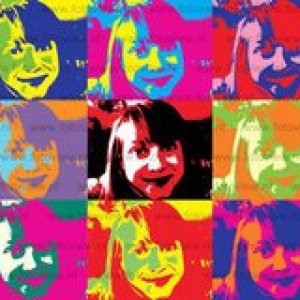



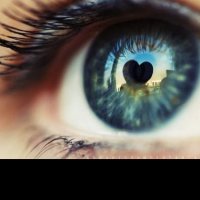
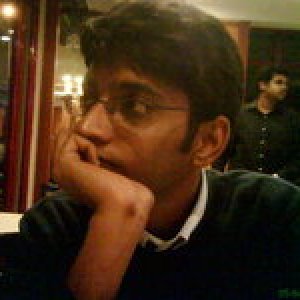




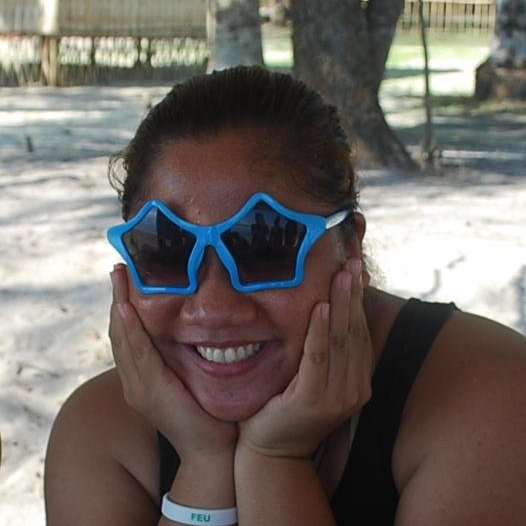

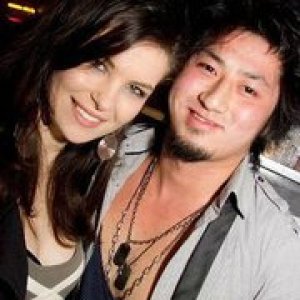







I liked
http://vimeo.com/11760441I disliked
Nothing